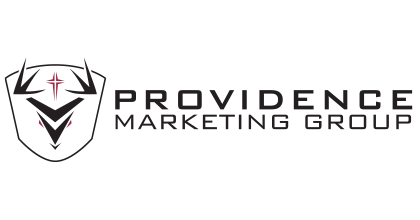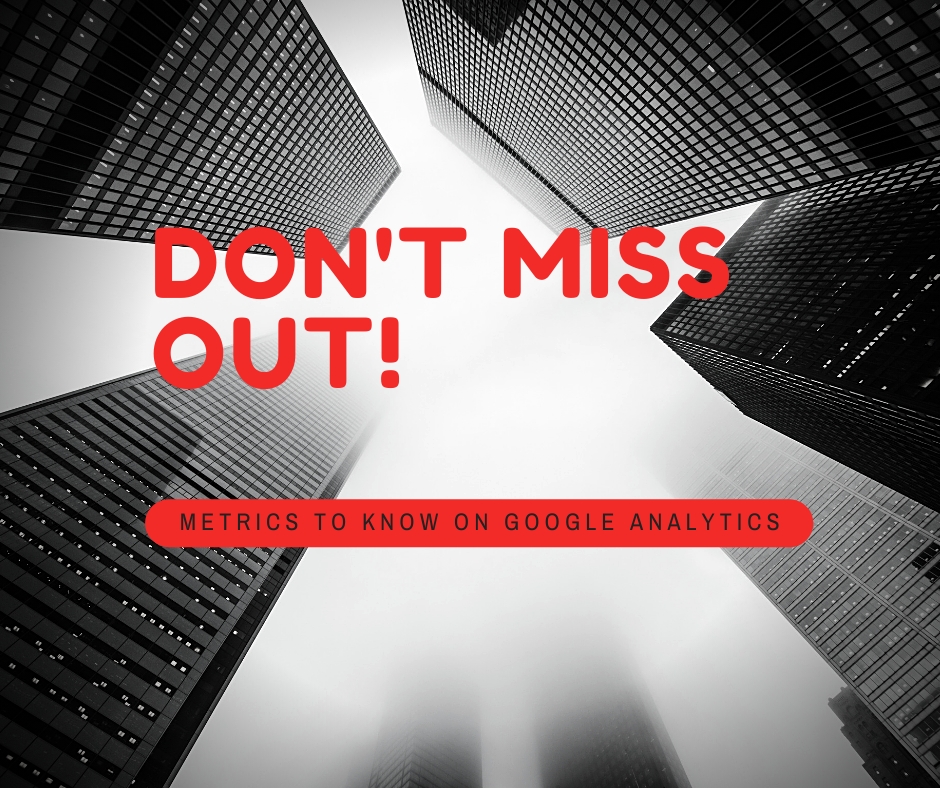Connecting your Google Ads account with your Google Analytics is almost a no-brainer.
The data that is shared can give you valuable insight into not only who is clicking on your ads, but how they behave after the initial click.
However, Google Analytics can be a bit overwhelming at times. If you are unfamiliar with the metrics are important to your business, you may be missing out on critical information that can help you adjust your ad campaigns, find more qualified leads and ultimately drive more revenue for you. Here are 3 quick metrics to keep an eye on.
- Bounce Rate
From Google, “A bounce is a single-page session on your site. In Analytics, a bounce is calculated specifically as a session that triggers only a single request to the Analytics server, such as when a user opens a single page on your site and then exits without triggering any other requests to the Analytics server during that session. Bounce rate is single-page sessions divided by all sessions, or the percentage of all sessions on your site that triggered a bounce.”
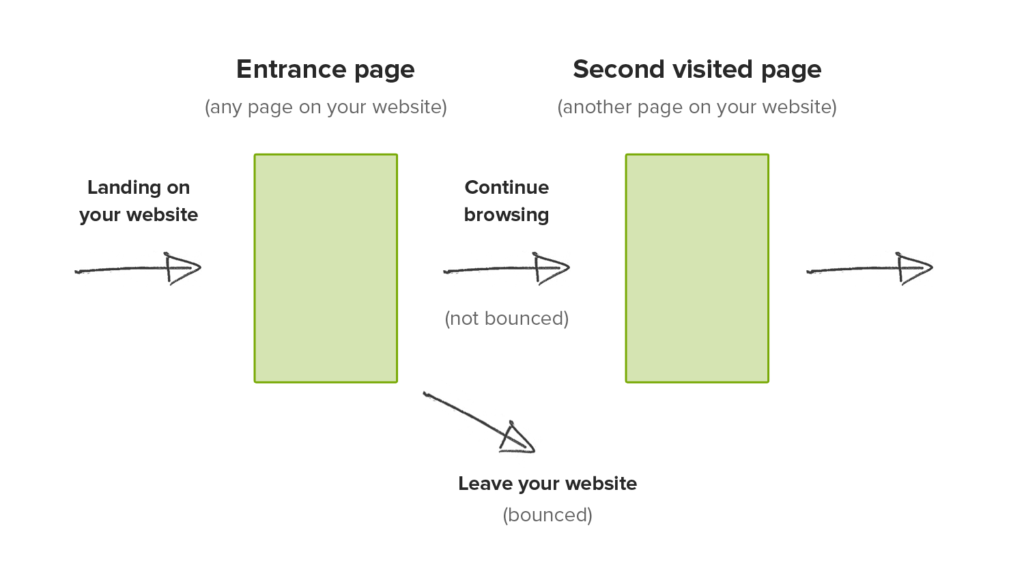
Let me clear this up, a bounce is when someone comes to your site via a specific landing page and never makes an action on that page or leaves that page to another part of the website.
Bounce rate is the percentage of clicks you receive that get categorized as a bounce.
It is not uncommon to see ad campaigns have an extremely high bounce rate, often over 60%, and that can be for several reasons.
One of those reasons is that you are targeting too broad of an audience. When you do not get specific enough with your keywords or audiences, you get a lot of wasted clicks from customers who are not actually looking for your product or service. Make sure to pay attention to your keywords and negative keywords in your campaigns to avoid wasted or unwanted clicks. Selling archery targets? The keyword Target is probably too broad – you don’t want your ads showing up when someone is looking for the retailer “Target”
Another reason for a high bounce rate is a poor landing page experience. If the page they end up on after clicking is confusing, slow loading, or not specifically what they came there for it will often result in a hasty exit and a bounce for you. If you are promoting a specific product or offer – bring them directly to that page. Do not take them to your home page and make them hunt for the product.
We often keep our target bounce rate under 40% depending on the client, ideally even lower if possible.
Bounce rate is a metric everyone should know and watch for as a measure of success on Google Ads.
- Demographics Overview/Interests
In marketing, understanding your audience is everything.
Who are they? Age, gender, interests, the list goes on and on when it comes to the data that can help you learn how to better target the people that are interested in your brand.
Google Analytics provides a great overview of who is visiting your website. For example, a client of ours recently found that shockingly over 60% of users on their website were women and over 20% of those were 65 or older. This information drastically changes the way you tailor your message when advertising. The brand had been completely focused on the 25-45 age groups while a large percentage of customers were a generation or even two generations older. Use this data to test your current assumptions, learn more about your audience, and fine tune your messaging.
It also helps to know what else your customers are looking for online to understand a little more about who they are.
Looking through the interests section of the audience tab on Analytics can tell you a lot about your current audience, for instance, if you have a large percentage of customers also looking for both “women’s apparel” and “baby toys” you can assume those customers are most likely moms and craft a message specifically to them about why your product is a great choice for not just them but their family as well.
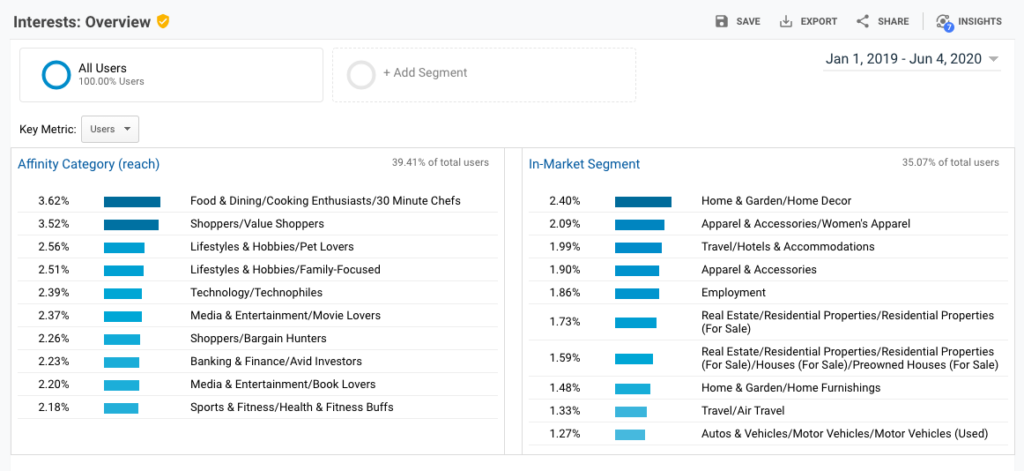
Or perhaps you have a large section of your audience also searching for garden tools and home improvement equipment. Knowing these details can be what separates you from your competitors when it comes to making the right impression with your ads so be sure to take the time to study and understand these metrics.
- Assisted Conversions
This may be the most important metrics of them all because many people have no idea it exists, and it can help you identify the true value of the Google Ad campaigns you are running.
Typically, Google Ads only tracks revenue that is directly generated by your ads, meaning the customer clicked the ad and proceeded to make a purchase. But what about all the customers that saw your ad, clicked, and then came back days later through a different funnel like organic search or direct traffic and made a purchase then.
That is where assisted conversions come in, it shows you the value of all orders that are made when the ads are involved in any part of the conversion path. So if your customers saw the ads and clicked, then came back directly to your site a few days later and purchased the ads would still get credit for assisting in that conversion even though the purchase didn’t come directly from clicking on the ad.
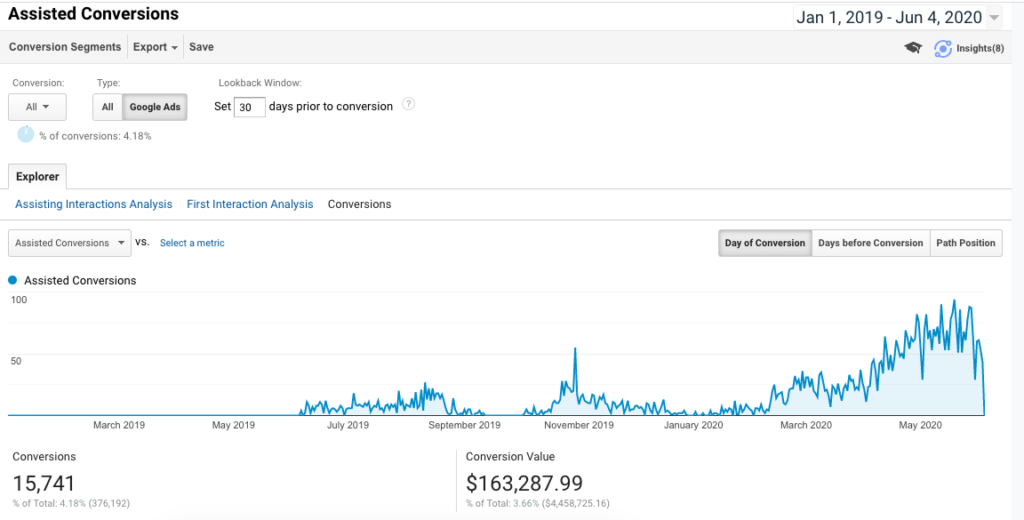
This information is vital because there are so many conversion path possibilities and many consumers may make multiple visits to your site before purchasing but that doesn’t mean that the interactions prior to the actual conversion were not instrumental in that final goal completion.
A great example. We had a client that sold high-ticket items, expensive and luxurious ($1,000+). Not the kind of item you make a spur of the moment decision on purchasing. We noticed customers making between 3-5 separate interactions with our ads and subsequently the website before deciding whether to make this large purchase.
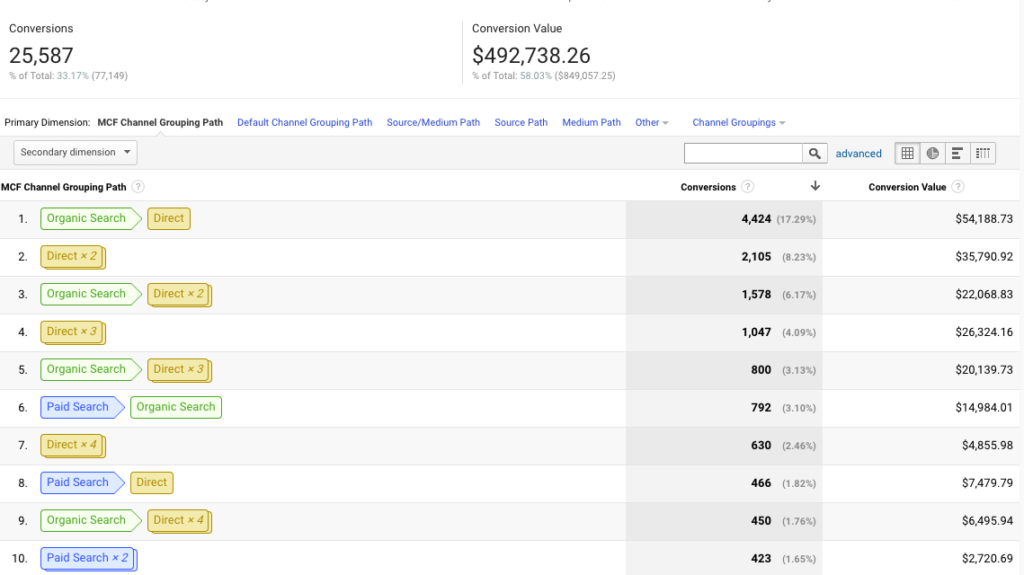
This process could happen over a period of a week, even up to a month so when studying our ads we showed only $2,000 in direct revenue, however, over $14,000 in assisted conversion value due to those customers repeatedly interacting with the ads before ultimately going directly to the website to purchase. Inevitably this number will continue to grow over time.
The purchase funnel is not always linear, nor does it always follow a distinct timeline, so having the ability the customer conversion path is crucial and helps you as a marketer truly assess the value of your campaigns, especially on larger, complex sales.
These three metrics are just a few of the often-overlooked features of Google Analytics which can help you better understand your ads, your customers, and how they interact with each other.
Using these tools will allow you spend your budget more efficiently, fine tune your audiences, and convert at a higher rate. Not sure how to do this? We can help, Providence Marketing Group is Google Ads and Google Analytics certified with experts ready to help take your brand to the next level and maximize potential. Contact [email protected] today for a personalized marketing consultation.
